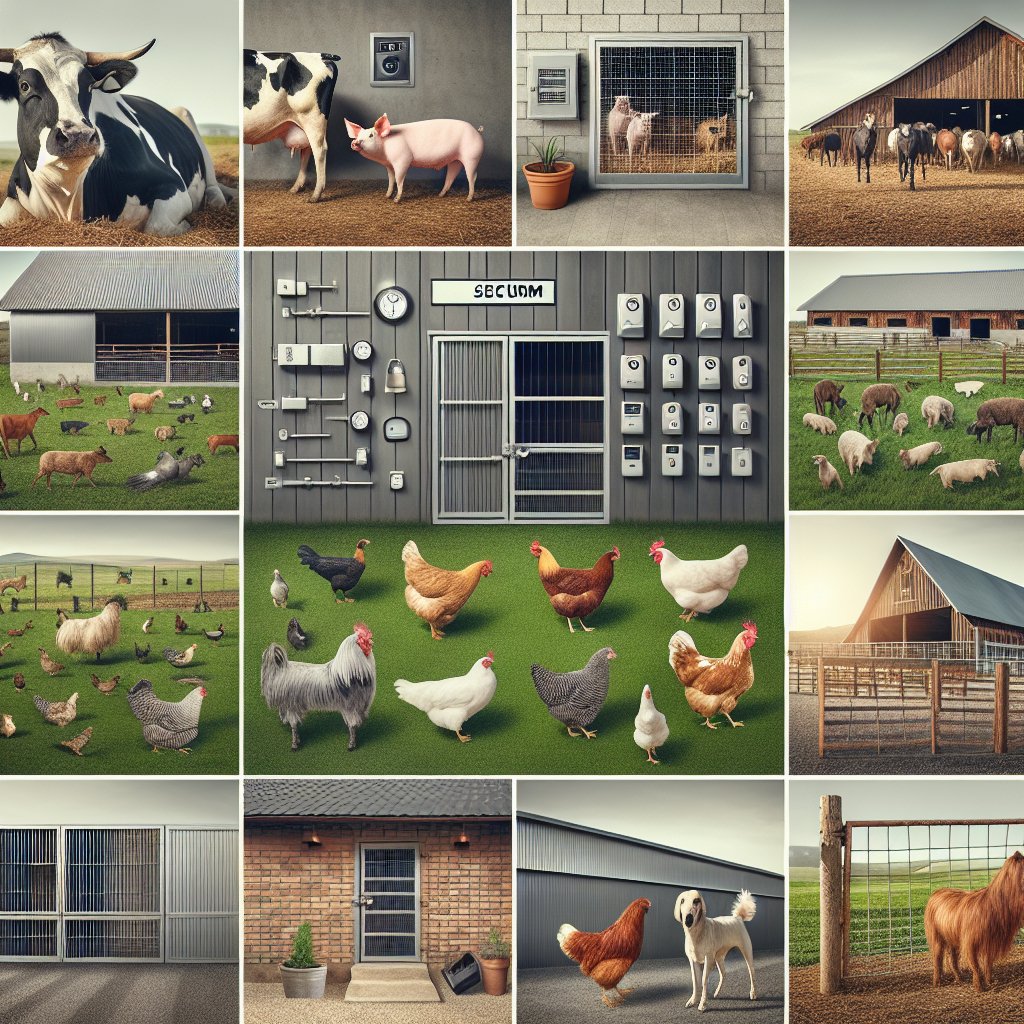
Ensuring the safety of farm animals from predators is a critical concern for farmers worldwide. Predators can cause significant losses, not only in terms of livestock but also in the economic stability of farming operations. This article explores various strategies and practices that can be implemented to protect farm animals from potential threats.
Understanding the Threats
Before implementing protective measures, it is essential to understand the types of predators that pose a threat to farm animals. Predators vary depending on the geographical location and the type of livestock being raised. Common predators include wolves, coyotes, foxes, bears, and birds of prey. Each predator has unique hunting behaviors and patterns, which require specific strategies to mitigate their impact.
Identifying Local Predators
Farmers should start by identifying the predators that are prevalent in their area. This can be done by consulting with local wildlife agencies, agricultural extension services, or neighboring farmers. Understanding the local predator population helps in tailoring specific protective measures that are most effective for the region.
Behavioral Patterns of Predators
Each predator has distinct behavioral patterns. For instance, wolves and coyotes are known for their pack hunting strategies, while foxes often hunt alone. Birds of prey, such as hawks and eagles, typically target smaller animals. Recognizing these patterns can help farmers anticipate potential attacks and prepare accordingly.
Implementing Protective Measures
Once the threats are identified, farmers can implement a range of protective measures to safeguard their livestock. These measures can be categorized into physical barriers, technological solutions, and natural deterrents.
Physical Barriers
Fencing is one of the most common and effective physical barriers used to protect farm animals. High-quality, predator-proof fencing can deter many ground-based predators. Electric fences provide an additional layer of security by delivering a mild shock to any animal attempting to breach the perimeter. It is crucial to regularly inspect and maintain fences to ensure their effectiveness.
In addition to fencing, secure enclosures or barns can provide safe havens for animals, especially during the night when predators are most active. Ensuring that these structures are robust and free from entry points is vital for the safety of the livestock.
Technological Solutions
Advancements in technology have introduced innovative solutions for protecting farm animals. Motion-activated lights and alarms can startle and deter predators from approaching livestock areas. These devices are particularly useful in remote areas where constant human supervision is not feasible.
Surveillance cameras equipped with night vision capabilities allow farmers to monitor their livestock and detect any predator activity in real-time. Some systems even offer remote access, enabling farmers to keep an eye on their animals from anywhere.
Natural Deterrents
Guard animals, such as dogs, llamas, and donkeys, can be effective in deterring predators. These animals are naturally protective and can alert farmers to the presence of predators. Dogs, in particular, have been used for centuries to guard livestock and are known for their loyalty and vigilance.
Additionally, maintaining a clean and organized farm environment can help reduce the attraction of predators. Removing food scraps, securing feed storage, and managing waste can minimize the likelihood of predators being drawn to the farm.
Community and Legal Support
Farmers are not alone in their efforts to protect their livestock. Community collaboration and legal support can play significant roles in managing predator threats.
Collaborative Efforts
Working with neighboring farms to share information and resources can enhance the overall effectiveness of predator management strategies. Community watch programs can help in monitoring predator activity and alerting farmers to potential threats.
Legal Considerations
Understanding the legal framework regarding predator control is crucial. In many regions, certain predators are protected by law, and farmers must adhere to regulations when implementing control measures. Consulting with local wildlife agencies can provide guidance on legal and humane methods of predator management.
Conclusion
Protecting farm animals from predators requires a comprehensive approach that combines understanding the threats, implementing effective protective measures, and leveraging community and legal support. By adopting a proactive stance, farmers can significantly reduce the risk of predator attacks and ensure the safety and well-being of their livestock.

